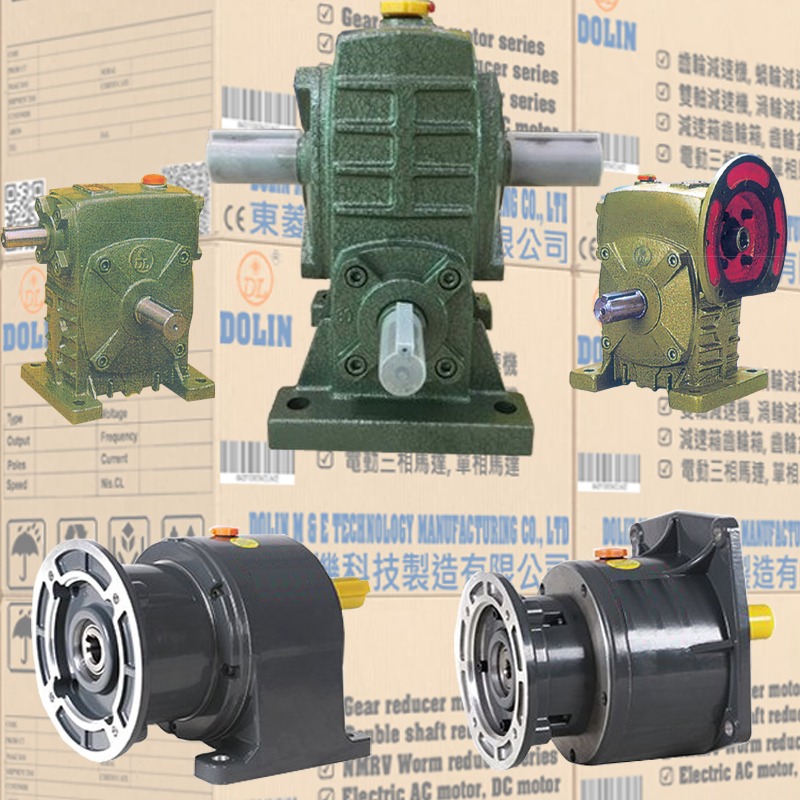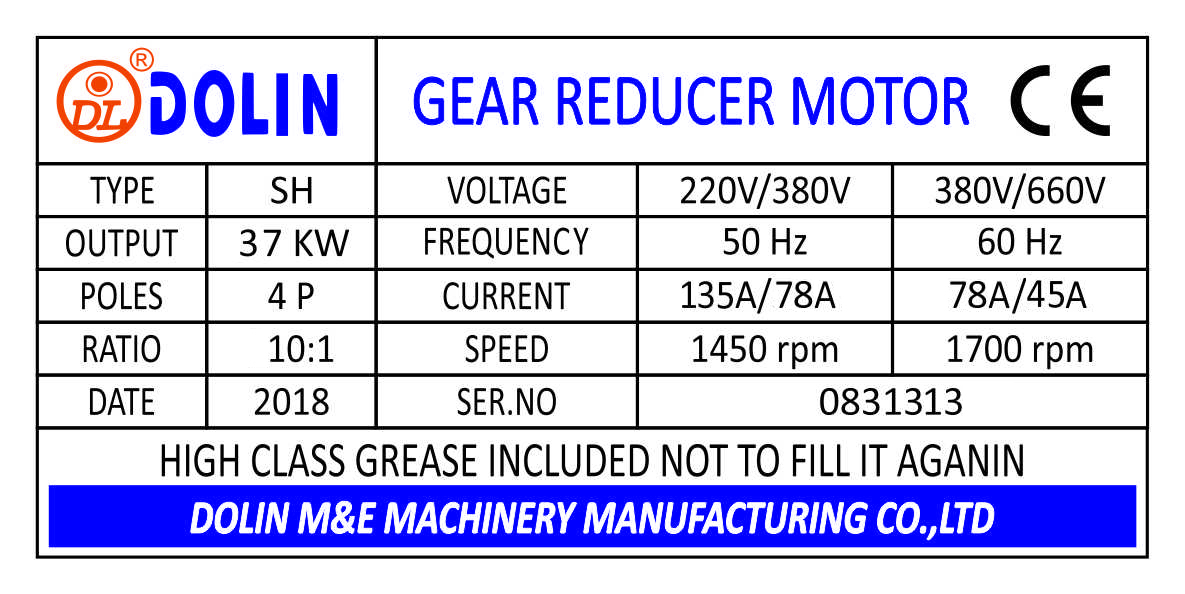- Home
- /
- News
- /
- Industry News
The World of Planetary Gears

Planetary gears, which can supply a lot of speed reduction and torque in a small package, have operating characteristics beyond those of fixed-axis gear trains
Planetary gearing, with its inherent in-line shafting and cylindrical casing, is often recognized as the compact alternative to standard pinion-and-gear reducers.
Being suited for a wide range of applications – from electric screwdrivers to bulldozer power trains – these units are strong contenders when space and weight versus reduction and torque are chief concerns.

To fully understand their operation, you need details. Examining the construction and mechanics of planetary systems reveals some of the less-obvious factors that come into play.
The arrangement
The most basic form of planetary gearing involves three sets of gears with different degrees of freedom. Planet gears rotate around axes that revolve around a sun gear, which spins in place. A ring gear binds the planets on the outside and is completely fixed.
The concentricity of the planet grouping with the sun and ring gears means that the torque carries through a straight line. Many power trains are "comfortable" lined up straight, and the absence of offset shafts not only decreases space, it eliminates the need to redirect the power or relocate other components.
In a simple planetary setup, input power turns the sun gear at high speed. The planets, spaced around the central axis of rotation, mesh with the sun as well as the fixed ring gear, so they are forced to orbit as they roll.
All the planets are mounted to a single rotating member, called a cage, arm, or carrier. As the planet carrier turns, it delivers low-speed, high-torque output.

A fixed component isn't always essential, though. In differential systems every member rotates. Planetary arrangements like this accommodate a single output driven by two inputs, or a single input driving two outputs.
For example, the differential that drives the axle in an automobile is planetary bevel gearing – the wheel speeds represent two outputs, which must differ to handle corners. Bevel gear planetary systems operate along the same principle as parallel-shaft systems.
Even a simple planetary gear train has two inputs; an anchored ring gear represents a constant input of zero angular velocity.
Designers can go deeper with this "planetary" theme. Compound (as opposed to simple) planetary trains have at least two planet gears attached in line to the same shaft, rotating and orbiting at the same speed while meshing with different gears.

Compounded planets can have different tooth numbers, as can the gears they mesh with. Having such options greatly expands the mechanical possibilities, and allows more reduction per stage.
Compound planetary trains can easily be configured so the planet carrier shaft drives at high speed, while the reduction issues from the sun shaft, if the designer prefers this.
Another thing about compound planetary systems: the planets can mesh with (and revolve around) both fixed and rotating external gears simultaneously, hence a ring gear is not essential.
Increasing reduction
Planet gears, for their size, engage a lot of teeth as they circle the sun gear – therefore they can easily accommodate numerous turns of the driver for each output shaft revolution. To perform a comparable reduction between a standard pinion and gear, a sizable gear will need to mesh with a rather small pinion.
Simple planetary gears generally offer reductions as high as 10:1. Compound planetary systems, which are far more elaborate than the simple versions, can provide reductions many times higher.
There are obvious ways to further reduce (or as the case may be, increase) speed, such as connecting planetary stages in series. The rotational output of the first stage is linked to the input of the next, and the multiple of the individual ratios represents the final reduction.
Another option is to introduce standard gear reducers into a planetary train. For instance, the high-speed power might pass through an ordinary fixedaxis pinion-and-gear set before the planetary reducer.
Such a configuration, called a hybrid, is sometimes preferred as a simplistic alternative to additional planetary stages, or to lower input speeds that are too high for some planetary units to handle. It also provides an offset between the input and output.
If a right angle is needed, bevel or hypoid gears are sometimes attached to an inline planetary system. Worm and planetary combinations are rare because the worm reducer by itself delivers such high changes in speed.
Taking the torque
Since planetary gears mesh with the sun gear and ring gear at several locations, more teeth are engaged to drive the load, compared to a conventional gearand- pinion mesh.
Therefore, for the same load, planetary gearing requires smaller gears (although in greater number) than a standard pinion-to-gear reduction.
Likewise, the radial arms of the planet carrier transfer substantial moment to the output shaft – another illustration of the efficiency of a concentric arrangement.
Perhaps a less obvious but no less significant consideration is that with multiple, equally spaced planets (as is usually the case) the input and output shaft bearings are spared the radial loads resulting from separating and tangential gear reaction forces, because these reactions cancel out. Plus, since no such forces act on these bearings, there is less potential for distortion of the outer casing.
With more planets comes an increase in load capacity and torsional rigidity; the more divided the load, the less deflection and wear of gear teeth. It follows that quite a large load can be driven in a comparatively small and streamlined planetary gear unit. Three is typical for the number of planets, but there are often more, and sometimes less. Again, it is common for multiple planets to be equally spaced.
Helical gears can be used for load capacity beyond spur gears, given comparable gear sizes and numbers of planets – because helicals are angled, not straighttoothed, even more teeth mesh at once. But with helical planetary gearing there are axial reactions, and these don't cancel with multiple planets like the tangential and separating gear reactions do, so bearings have to account for the thrust load.
Wear and tear
As far as lifetime and wear are concerned, in-line planetary systems distribute the load remarkably well among major components, and the economic size is evidence of this. If all the components were of similar quality, yet a potential weak spot had to be singled out, it might be the bearings that support the individual planet gears.
Here space is often very limited, so planet bearings can be small compared to some ordinary gear-and-pinion reducers where there is a lot of leeway for larger bearings. And don't forget, the canceling effect of multiple planets on radial loads applies only along the central shafting; it is in fact the radial loading on individual planet bearings that drives the carrier around.
Thermal and cyclic fatigue may be promoted in these bearings by the limited load distribution and the fact that planet gears can spin pretty fast on their axes. What's more, with high speeds and heavy planet gears, centrifugal forces can add significantly to the burden.
That is not to say that planet bearings don't often outlast other components. And clearly, high-grade precision bearings used with low-grade high-tolerance gears isn't an "all things equal" arrangement.
Planet balancing
The load taken up by the planets is, in real situations, not perfectly balanced. One planet might by chance end up radially closer or further than the others from the sun axis, or the axis of the carrier rotation might be slightly off. As the precision of manufacture goes down, and the number of planets goes up, the tendency for imbalance increases.
Sometimes the effect of an imbalance is small, and the operation is able to accept it. The planets might even "wear in" and gradually engage the load more evenly. But some designs will be sensitive even to slight imbalances, and may require high-precision components and assemblies; pinpointing the proper locations of planet pins around the axis of the sun gear could be the key.
Other schemes that help balance planet loads include using floating subassemblies or "soft" mounts to allow some small radial movement of the sun or the planet carrier. In this way components can continually shift just a little, helping to equalize uneven loading. Mounting part of the assembly soft is not an uncommon design practice, but stiff assemblies can have advantages over flexible ones, so the answer isn't always cutand- dry.
Noise
In planetaries, noise is usually no worse, and often better than standard gear-and-pinion reducers. Having smaller gears means a lower pitch line velocity than a comparably rated pinionand- gear set. However, having a lot of identical planet teeth engaging at the same frequency with each input shaft revolution contributes to noise, especially at very high speeds.
And the fact that these meshes occur in a circular orbit can make the situation more complex. Obviously, using spur gears of reasonably high quality couldn't hurt. But helical gears, with their gradual rather than instantaneous tooth engagement, might be better for some operations.
Another noise reduction strategy that has been used involves designing the system so the planets mesh out of phase from one another and thereby provide a canceling effect. Damping the system can also help, as it discourages resonance.
Heat
A planetary gear train running at very high speeds and continuous duty is apt to generate enough heat to justify cooling. With ordinary gear-and-pinion systems, the load often requires quite a large chunk of gearing and surface area, which amounts to an appreciable heat sink.
The compactness of planetary units can limit the rate of heat dissipation, and therefore additional measures are sometimes taken; the lubricant may be circulated through a heat exchanger, or a cooling fan is employed.
If the operation is continuous, the system has less opportunity to cool than if it runs intermittently, and without sufficient cooling, the speed allowance might need to be lowered. Or, as mentioned, other kinds of speed reducers can be attached ahead of the planetary reducer, although this is an added encumbrance.
The range of speeds for planetary gearing varies widely depending on the application. Often, the size of the gear drive largely affects the speed rating, since a higher pitch line velocity can mean a heat increase far beyond any cooling effect from the larger geometry. Indeed, there are small planetary drives that run at tens of thousands of rpm.
Newer articles
- The Applications of Electric Motor (27/03/2018)
- How to Size a Gear Reducer (27/03/2018)
- Worm Gear Speed Reducers (27/03/2018)
- Permissible horsepower loading (05/04/2018)
- A worm gear is a device that transfers force to another device via rotation mechanism (27/03/2018)
- The facts about Worm Gear (26/03/2018)
- Advantages and disadvantages of different types of gears (01/09/2018)
- How to Select a Gearmotors (01/10/2019)
- The application of the Worm Gears (26/03/2018)
- What are Brushless DC Motors (31/05/2019)
Older articles
- Gearbox Motors vs Integrated Gearmotors (16/04/2008)
- AC or DC? brushed DC or brushless DC Gear Motor? (24/04/2008)
- How a Speed Reducer Works (17/03/2018)
- How to Select a Speed Reducer for Your Next Design or Project (17/03/2018)
- What does it mean when a motor or gearbox is “servo rated?” (13/03/2018)
- What is a planetary gearbox? (13/03/2018)
- Advantages & Disadvantages of AC power and DC power (08/03/2018)
- What are the advantages and disadvantages of the induction motor ? (22/02/2018)
- Advantages And Disadvantages of Induction Machines (11/01/2018)
- When and Why You Should Choose a Worm Gear Reducer (06/03/2018)





Join